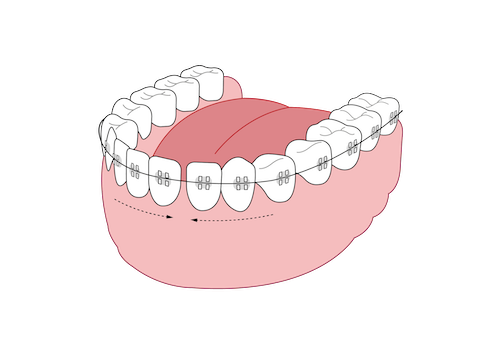3
Keep smiling with orthodontic treatment
Orthodontic treatment uses appliances to safely move or correct the position of teeth for cosmetic reasons and/or chewing function. Teeth are moved by either a fixed or removable appliance, such as springs or moulds, usually referred to as braces. There are also aligners that can accomplish teeth movement in some cases.
Image
 |
When/why should you choose this option?
- You are motivated to wear fixed or removable braces and will stick with it for the duration of the treatment.
- It is possible to achieve the desired results by tooth movement, or tooth movement in conjunction with other treatment options.
- The closure of spaces and alignment of teeth may improve the options available for further restorative treatment.
- Results may be achieved without the need for more invasive procedures and surgery.
What do you need to be aware of?
- Moving teeth can take months to years depending on the extent of movement required. If tooth movement is used in conjunction with other treatment options, i.e. prosthetic devices, the overall treatment time may be longer.
- Brushing and flossing can be more challenging because food and plaque can accumulate around the braces. This can lead to an increased risk of caries and gum disease. Good oral hygiene is essential.
- In order to prevent active gum disease from getting worse, braces are not recommended.
- The risk of root resorption (root shortening) can lead to loosening of the teeth.
- This option may require lifelong retention via fixed or removable retainers.
What will you need to do to improve your chance of long-term success?
- Brush your teeth twice a day with a toothpaste containing at least 1,100 ppm fluoride if your risk of dental caries is low.
- Use dental floss and/or interdental brushes to clean between your teeth. This will be more difficult with braces, so ask your dentist about special flossing tools to help make it easier.
- Eat a well-balanced diet that is low in sugar.
- You are likely to need regular follow-ups to adjust the braces as advised by your dentist.
What if there are problems?
- You and your dentist will need to revise your care plan if your teeth fail to move, or the treatment does not achieve the desired outcome.
What other factors do we need to consider?
- Invasiveness of procedure: Non-invasive, unless used in conjunction with prosthetic restoration.
- Treatment fees: The cost varies depending on the type of braces used, e.g. metal, ceramic or clear. Metal braces are generally less expensive.
How does this option affect you?
If the treatment is successful, you are likely to achieve good results.